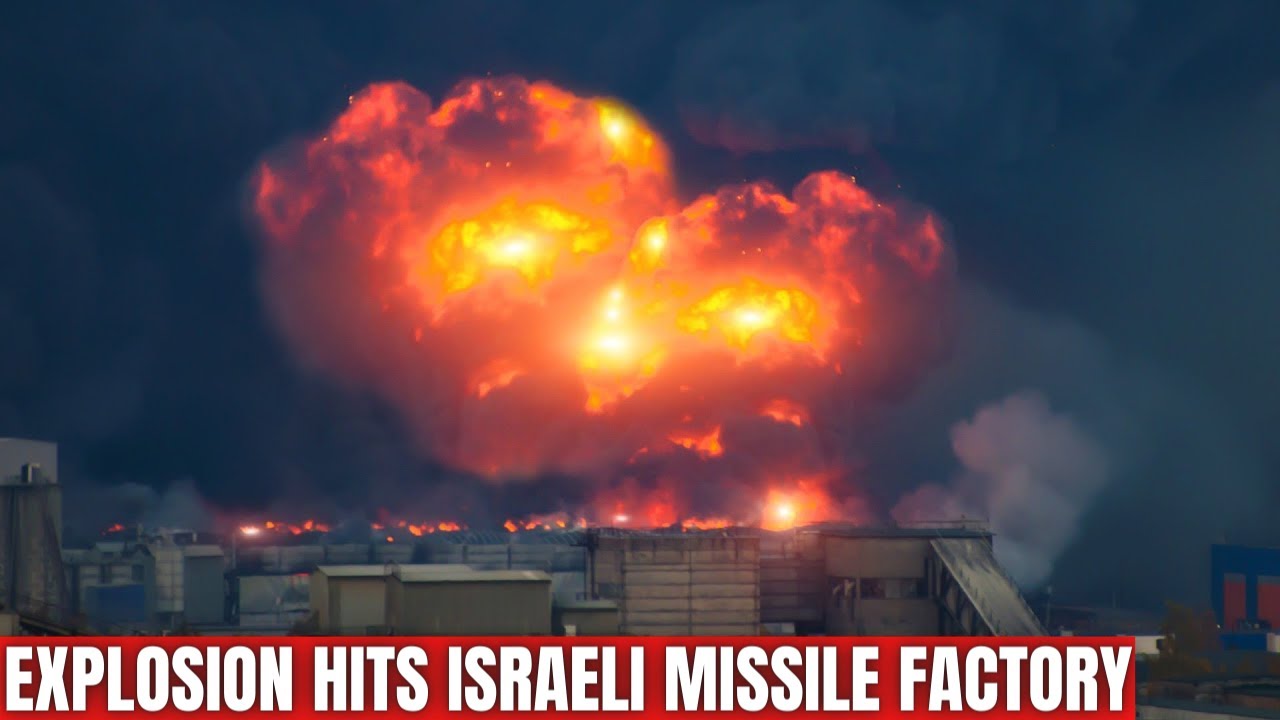That Explosion at the Weapons Factory in Israel
by Hugh Fitzgerald

An explosion at an Israeli weapons factory has given the Iranians cause for celebration. It’s unclear if their gloating reflects a belief that the Israelis themselves were responsible for a destructive accident or, rather, the hope that Iranian saboteurs were responsible, as a response to the explosion at Natanz a few weeks ago that has been universally attributed to Israel. A report on the malicious mafficking in Iran is here: “Iran media celebrates ‘explosion’ at ‘sensitive Israel missile factory,’” by Seth J. Frantzman, Jerusalem Post, April 21, 2021:
Iranian state media highlighted a “powerful explosion” that they said took place at a “sensitive Israeli missile factory” during a test.
A similar report appeared in Haaretz, and it appears Iranian media took their information from there.
The Iranian reports come in the wake of Iran accusing Israel of “nuclear terrorism” for an incident at the Natanz enrichment facility earlier this month, a day after The New York Times ran an article about Iran being “rattled” by “Israeli strikes.” The incident thus occurred at a sensitive time, and some pro-Iranian voices online mocked Israel for the explosion.
Tasnim [an Iranian news site] quoted pro-Hamas Palestinian media as referring to the “terrible explosion.” It said it took place at a “sensitive military-industrial site in the Gush Dan area.” It quoted eyewitnesses as seeing flames at a “great height.”
So the explosion was a large one. It took place at a weapons factory. But the Palestinians can be no more certain if it was an accident, a deliberate explosion set off by Israeli scientists as part of a test of weaponry, or an act of sabotage, than are the gloaters sitting in Tehran.
It noted that the “Zionist regime” had not commented on it but that “Zionist sources” had said the site was responsible for the production of advanced weapons of war, including various missiles.
Nevertheless, Haaretz said that the explosion was the result of a routine test in central Israel at the Tomer factory for advanced weapons.
Haaretz is a left-wing paper that often takes a positive – and most unseemly — delight in criticizing Israel’s political and military establishment whenever it can. If Haaretz says the explosion was “the result of a routine test” – and not a security breach with Iranian agents involved — then one can be sure that is true. A question remains: was that explosion “unwanted,” the result of what should have been a routine test going awry because of human error, or was it the desired result of what the scientists may have been testing – either the ability of drones or laser weapons to bring down a missile in mid-flight, or the ability of an advanced missile to take successful evasive action against those weapons?
The Tomer factory, where the explosion occurred, makes both advanced missiles and anti-missile defenses. It is located not far from residential areas, and Israel would be unlikely to use such a site to deliberately cause explosions of such magnitude. One can therefore conclude that the explosion was not deliberately caused by the Israeli scientists, but was the result of human error or systems failure.
Among the gleeful Iranians reporting on the explosion, some will indeed attribute it to Israeli error and make the most of it, gloating that “see, the mighty Zionist state is not so invulnerable, its most important scientists make mistakes.” Other Iranians will want to attribute the explosion to Iran’s own agents, describing it as a payback for Israel’s sabotage recently at Natanz, where Mossad agents managed to cut off power to the centrifuges from both the main electrical grid and the backup batteries simultaneously. The sudden power cut sent the centrifuges spinning out of control, destroying thousands of them. And this all took place at the new centrifuge plant that had been built 50 meters underground, and that the Iranians assumed would be impregnable. Fereydoun Abbasi-Davani, the head of the Iranian parliament’s energy commission, said: “The design of the enemy was very beautiful, if I look at it scientifically. They … hired their experts, and it exploded in a way that damaged both that power distribution system and the emergency cable that came from the generators.”
Does it matter which story about the explosion at the Tomer factory prevails in Iran? Yes. The Iranian government wants to convince Iranians that when it “vowed revenge on the Zionists,” it was not going to be content with hurling a few missiles, as it did initially, at the Israeli-owned cargo ship, the Hyperion Ray, while it was in the Gulf of Oman. It can claim that it was waiting for just the right target, and the Tomer advanced missile plant near Ramle fit the bill. The Iranian government can let it be known that “we know Israel will not confirm it, but we have taught them a lesson, they know what it is, and we have more than evened the score.”
And if Israel denies that Iran had anything to do with the explosion at the factory, Iran has ready its reply: “Well, the Zionists would say that, wouldn’t they?”
But instead of denying it, Israel should maintain a studied silence. Let the Iranians claim they have taken their revenge; this benefits both Iran and Israel. It allows Iran to claim it has caused enough damage to avenge the latest attack on Natanz, so that for now no further attack on the Zionists need be launched. And that same comforting fiction will allow Israel to breathe a little easier, as well.
First published in Jihad Watch.